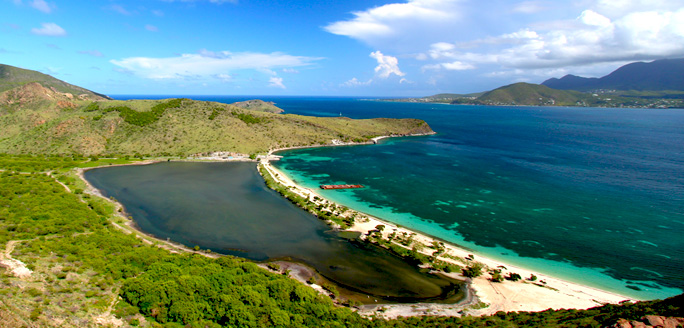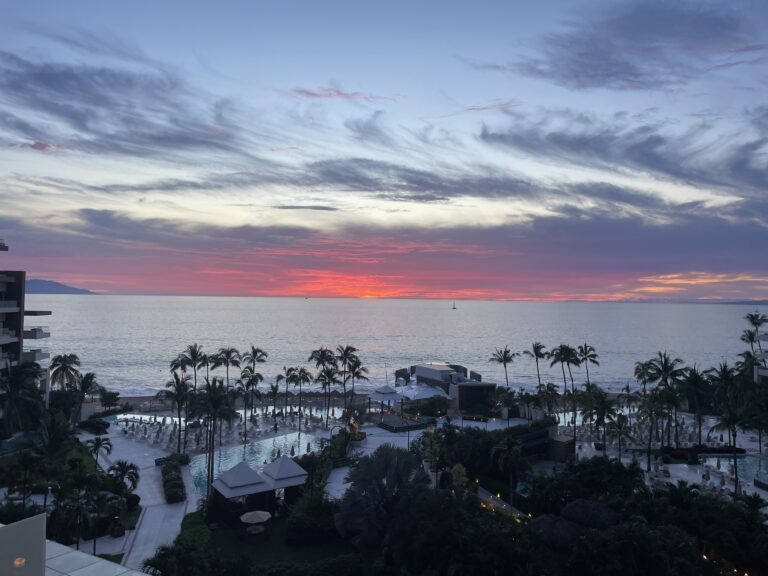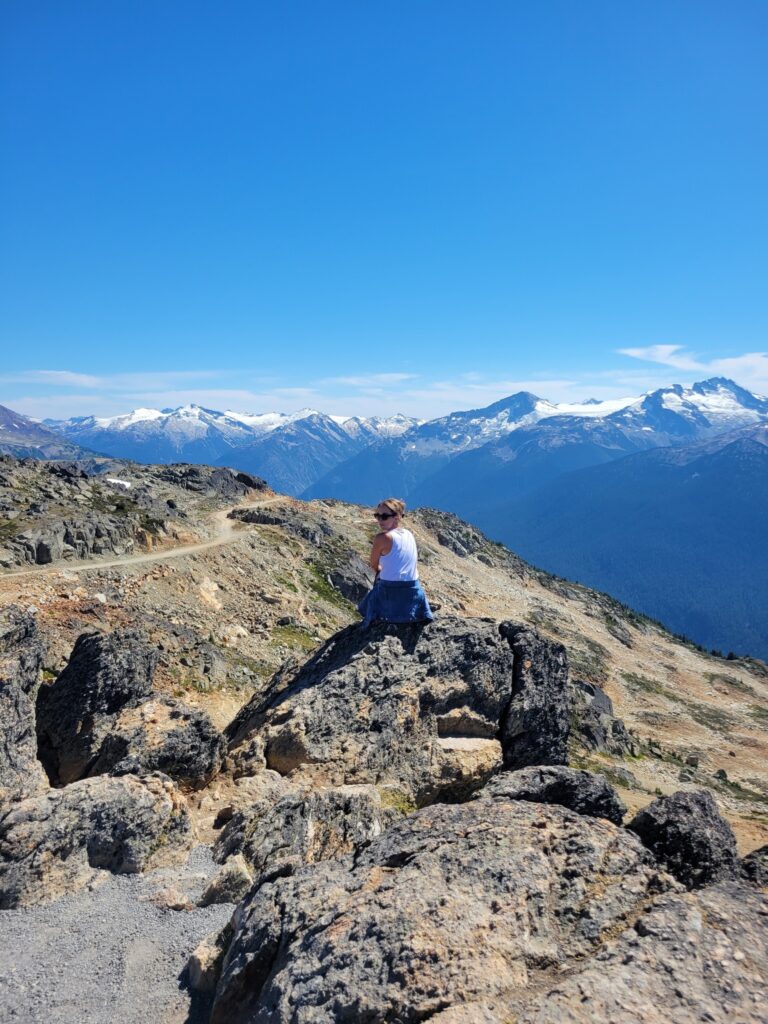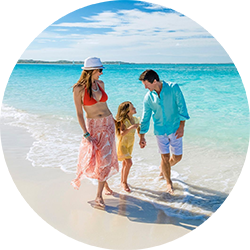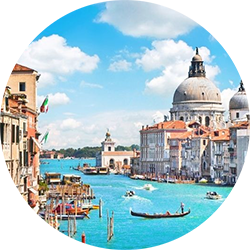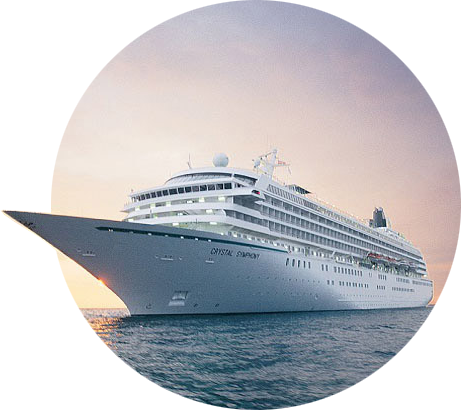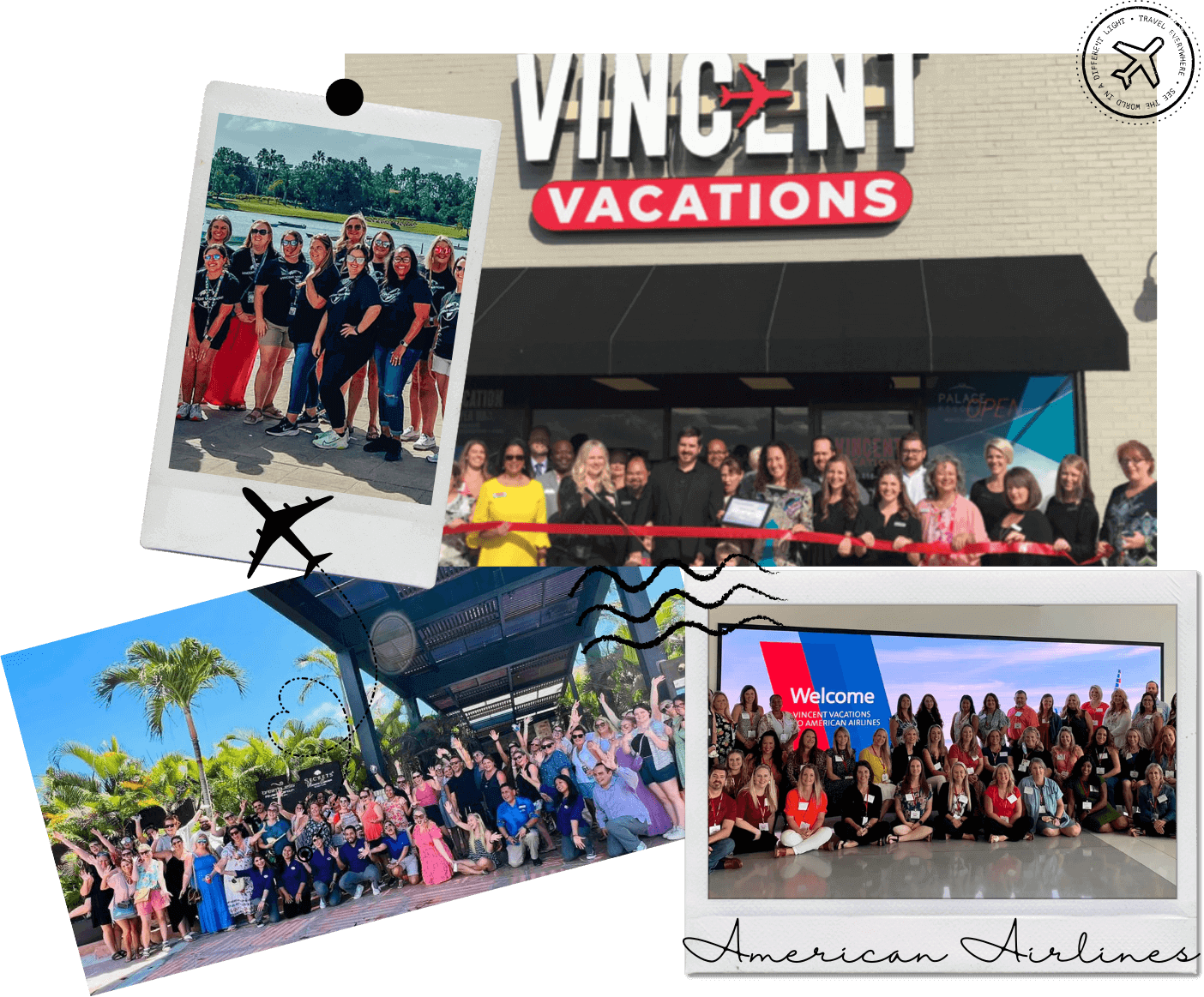Spa Cruises Near Me, Deals & Cruise Travel Agents Near Me
We recognize that cruise vacations are not just an investment, but often the highlights of our lives, and we take that responsibility seriously. We want to ensure you have the best vacation experience.
Interested in a job in travel? Click here to learn: How to Become a Cruise Travel Agent
100% custom to your needs! We handle flights, pre and post travel, transfers, excursions and more, no matter if it's a solo trip or a large group! Contact us today for a custom curated FREE cruise vacation package quote.
Why BOOK with us?
We partner with cruise lines to bring you the best value!
 CLIA Certified (Cruise Lines International Association)
CLIA Certified (Cruise Lines International Association) THE BEST Onboard Credits and Perks
THE BEST Onboard Credits and Perks Access to Exclusive Deals and Discounts
Access to Exclusive Deals and Discounts Price Monitoring and Adjustments
Price Monitoring and Adjustments Bundled Custom Packages
Bundled Custom Packages Flights, pre- and post-cruise hotel stays, transfers, excursions all-in-one saving you time and money
Flights, pre- and post-cruise hotel stays, transfers, excursions all-in-one saving you time and money Dedicated Support
Dedicated Support
 Our Agents are ASTA Verified Travel Advisors (VTA)
Our Agents are ASTA Verified Travel Advisors (VTA) Tailored Recommendations
Tailored Recommendations Time Savings
Time Savings We Handle the Complexities
We Handle the Complexities Assistance with Issues
Assistance with Issues Positive Reviews and Referrals
Positive Reviews and Referrals Years of Experience
Years of Experience
When it comes to relaxation at sea, Princess Cruises stands out with its exceptional spa and Sanctuary experiences. These luxurious amenities offer passengers a tranquil escape from the stresses of everyday life, providing a rejuvenating experience that leaves travelers refreshed and revitalized. In this article, we'll explore the highlights of Princess Cruises' spa and Sanctuary offerings, showcasing why they are a top choice for those seeking the ultimate in relaxation and pampering.
Viking Ocean's LivNordic Spa is a beacon of wellness and relaxation on the high seas, offering a unique blend of traditional Nordic practices and modern luxury. Imagine yourself surrounded by the soothing ambiance of a Scandinavian sanctuary, where the stresses of daily life melt away with each gentle wave. In this guide, we will explore the key highlights and features that make the LivNordic Spa a standout experience for travelers seeking a holistic getaway.
Silversea Cruises is renowned for offering an unparalleled level of luxury and comfort, setting a new standard in the high-end cruise industry. With its all-inclusive fares, guests can enjoy a wide range of amenities without worrying about additional costs. From gourmet dining to premium beverages, and from fine linens to attentive butler service, Silversea ensures that every detail is meticulously taken care of to provide a truly indulgent experience.
Imagine yourself on a serene ocean journey, surrounded by luxurious amenities designed to melt away stress and rejuvenate your spirit. Viking Ocean Cruises offers just that with their exceptional spa and wellness facilities, setting a new standard in relaxation at sea. Whether you're a seasoned traveler or a first-time cruiser, the allure of Viking's spa experience is undeniable.
Silversea Cruises is renowned for offering an unparalleled luxury cruise experience, combining the elegance of personalized service with the convenience of all-inclusive packages. Their fleet is designed to provide a sophisticated and intimate atmosphere, ensuring that every guest feels like royalty. Whether you're looking for gourmet dining, expansive ocean views, or immersive destination experiences, Silversea has crafted an environment that caters to every desire.
Embarking on a cruise is not just about exploring new destinations, but also about rejuvenating your body, mind, and spirit. Many cruise lines now offer exceptional onboard spa and wellness programs that cater to a wide range of needs and preferences. These programs blend traditional wisdom with modern science, providing a holistic approach to wellness that is both refreshing and transformative.
The atrium of a cruise ship is often referred to as the heart of the vessel, serving as a central hub for everyday activities, events, and parties. It is here that passengers first experience the essence of their cruise, as the atrium is typically the first space they encounter upon boarding. This vibrant area is fundamental in connecting various aspects of the ship, including shopping, dining, and entertainment venues.
Embarking on a cruise is an exciting adventure, but it often comes with the challenge of packing efficiently for a comfortable and enjoyable trip. Given the limited space in cruise cabins, it's crucial to pack smartly to ensure you have everything you need without cluttering your living area. Here are some essential tips and tricks to help you make the most out of your cruise cabin space.
When you think of a cruise, you might envision sun-soaked decks, bustling dining halls, and a plethora of activities designed to keep you entertained. However, for those who crave a quieter, more introspective vacation experience, cruise lines have meticulously crafted serene spaces where you can escape into the pages of a good book.
Embarking on a cruise is more than just a vacation; it's an opportunity to indulge in unparalleled relaxation and rejuvenation. At the heart of this luxurious experience are the onboard spas, designed to transport you to a world of serenity and harmony.
> Spain
The exotic country in Europe, due to the friendly inhabitants, relaxed lifestyle, interesting cuisine, vibrant nightlife, and world-famous folklore and festivities. Spain is a great destination for any type of trip, such is the diversity of what it has to offer. Superb beaches, thriving cities, vibrant coastal metropolis, fun nightlife, idyllic islands, stunning wine regions, cultural diversity and historic towns. There is everything from lush meadows and snowy mountains to huge marshes and deserts in the south east. There are numerous monuments, museums, nature areas, accommodation options and restaurants offering services, settings and activities that are partially or totally accessible.
Free Spain Vacation Package Quote
Spain is what you want, Spain is what you need!
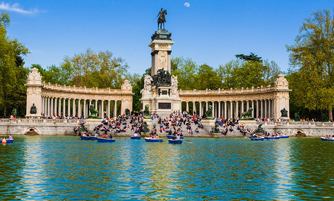
Madrid
Madrid, the capital of Spain, is a cosmopolitan city that combines the most modern infrastructures and the status as an economic, financial, administrative and service center, with a large cultural and artistic heritage, a legacy of centuries of exciting history. Strategically located in the geographic center of the Iberian Peninsula , Madrid has one of the most important historic centers of all the great European cities. This heritage merges seamlessly with the city's modern and convenient infrastructures, a wide-ranging offer of accommodation and services, and all the latest state-of-the-art technologies in audiovisual and communications media. These conditions, together with all the drive of a dynamic and open society –as well as high-spirited and friendly– have made this metropolis one of the great capitals of the Western world.
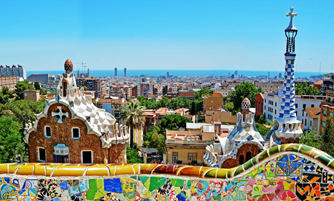
Barcelona
Barcelona, the capital of Catalonia, is a Mediterranean and cosmopolitan city with Roman remains, medieval quarters and the most beautiful examples of 20th century Modernism and avant-garde. It is no surprise that emblematic constructions by the Catalan architects Antoni Gaudí and Lluís Doménech i Montaner have been declared World Heritage Sites by UNESCO.
The city's origins are Roman, and its long history and economic dynamism have made Barcelona a cultural city, which can be seen in the historic-artistic heritage and the promotion of the most innovative artistic trends. A wide cultural program will take visitors to museums, exhibitions, open-air sculptures… and many concerts, plays and dances.
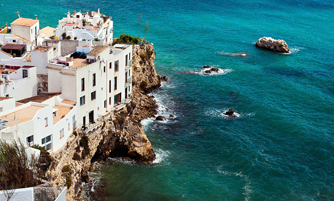
Seaside Destinations, Cities, and Towns
Spain has some of the best beaches in the world.
That's the reason we come top every year in the number of Blue Flags awarded. You'll find a whole range of different destinations where you can enjoy them all along the Spanish coast, including everything from large seaside cities to enchanting fishing villages.
Great cities that are famous all over the world, inland destinations steeped in charm, maritime towns to enjoy activities by the sea, a host of places to explore… Come and discover Spain!
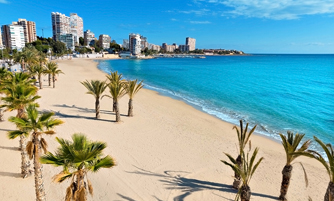
Costa Blanca
Do you want to see 135 miles of coastline with calm waters and fine white sand beaches? You will see mountains that loom over the Mediterranean, fruit groves and palm groves. In eastern Spain, in the province of Alicante, 2800 hours of sun a year await you.
Many of the beaches of the Costa Blanca have a Blue Flag, and some of them are very famous, such as Levante and Poniente beaches in Benidorm. The nature in this area also holds pleasant surprises for you, such as the Guardamar dunes; the Peñón de Ifach crag in Calpe; the Torrevieja-La Mata lagoons; the Nature Reserve of Tabarca Island and its marine fauna; and the Fuentes of Algar, a group of waterfalls and springs in Callosa d'En Sarrià.
Free Spain Vacation Package Quote
Categories: Europe > Spain
Overview
Introduction
Espanola, New Mexico, is best known for being at the heart of a handful of historic pueblos: San Juan, San Ildefonso, Santa Clara and Pojoaque, to name a few.
Espanola will also appeal to car buffs: It's a center for low-riders and classic autos. It also features the historic Santa Cruz de la Canada mission church and some of the best New Mexican cooking in the state. A veteran's memorial honors the area's service members.
Overview
Introduction
White-sand beaches and a large population of waved albatrosses have made this southern island (also called Hood Island) a frequent stop for visitors. It is one of the oldest islands (3.3 million years) and is considered to have formed from an uplift caused by submarine lava.
Most excursions on this island head first to Punta Suarez, a challenging hike that involves walking over rugged volcanic rocks to see colonies of sea lions and throngs of marine iguanas sunning themselves. (Visitors should look for the Christmas iguanas, whose name comes from their red and green markings during mating season.) On the trail to the overlook, many sea birds are visible, including fork-tail frigate birds, hawks and mockingbirds. Lurking farther inland and thus rarely seen by tourists are saddleback tortoises native to the island. Unique to the island of Espanola is the Espanola mockingbird.
The stars of this island, however, are the waved albatrosses, the largest birds in the Galapagos. Their landings and takeoffs aren't particularly graceful, but once they're airborne, they're majestic. Those who visit late March-December can usually watch the birds' elaborate courtship ritual: They bow, click their bright yellow bills, circle and honk at one another before mating for life. After raising their young, the birds head out to sea, where they often spend three or four months without touching land. Between January and early March, waved albatrosses follow the cooler waters back to the west coast of South America and the South Pacific.
The beautiful white-sand beach at Gardner Bay is another popular stop. The sea lions are so comfortable with visitors that it's a good place to snap photos of them and observe their behavior. Lava lizards, another endemic island species, linger nearby. The swimming is good, and visitors can snorkel in the bay near Gardner Rock to see a variety of colorful fish, rays, baby sea lions, starfish and an occasional whitetip reef shark.
Overview
Introduction

The highlight of Trinidad is Port of Spain, the capital. It's a bustling city on the water's edge, offering ample opportunities to visit bazaars, markets, parks, heritage homes and various shrines, mosques and temples. Many cultures are represented, each with attractions relating to its heritage.
Woodford Square is one of the town's prettiest areas, where large flowering trees shade the walkways and lawns. Near the square is the Cathedral of the Holy Trinity. Consecrated in 1823, it is known for its elaborately carved hammer-beam roof. Across the square is the Red House, the ornate home of the House of Representatives.
About eight blocks north of the square is the Queen's Park Savannah, considered the heart of the city. These 80 acres/32 hectares of open land are filled with shade trees, lily ponds and gardens. (The park is the center of activities during Carnival.)
On the western edge of the park you'll find the Magnificent Seven, an eclectic group of houses built at the turn of the 20th century. They include a Scottish castle and an Edwardian school. Also in the area is the National Museum, on Frederick Street. Fort St. Andres, located in the heart of the city, has been restored. Phone 868-623-5941.
The tree-lined boulevard called Independence Square is near the cruise-ship terminal. The grand, early-1800s Roman Catholic Cathedral of the Immaculate Conception is its heart. To the left and right of the cathedral is Brian Lara Promenade, which has benches and shade trees.
Unlike most Caribbean cities, Port of Spain is big enough to have some interesting suburbs. St. James District, the East Indian section of town, is where the Hindu and Muslim festivals are held and where you'll find great silk-sari shops.
In Ellerslie Park, Goodwood Park and St. Clair, west of Queen's Park, you'll find the city's most elegant residences.
Overview
Introduction
A popular destination from the 17th century onward for the famous hot springs, which claim to have healing powers, the original town of Spa has some beautiful grand buildings and parks dating from the time when it was the "cafe of Europe." In busy visiting periods (the summer months and December), the tourist office organizes guided tours, and the main museum, the Musee de la Ville d'eau, is worth a visit for its vintage posters advertising the advantages of Spa water.
However, we recommend Spa as a place to relax, sample the fine food and hike in the nearby forest rather than for sightseeing. Take a trip in a glass elevator up the hill to the Thermes de Spa to bathe in the famous waters, enjoy a massage, mud bath or beauty treatment and generally have the pampering of a lifetime. In winter time, there is a Christmas market and an ice rink. In sharp contrast to the sleepy atmosphere and romantic valleys of the surrounding countryside is the Spa-Francorchamps motor-racing circuit, which hosts a famous grand-prix race every autumn. Spa is 100 mi/160 km southeast of Brussels.
Overview
Introduction
Spain offers visitors a richness and complexity that may surprise. All the tempting postcard fantasy pictures are there in reality, side-by-side with other, less-expected ones.
You may come across fiesta dancers in a village square, a young man practicing flamenco guitar, a medieval Arab fortress or windmills so enormous Don Quixote could be forgiven for thinking they were giants.
But there's also the Guggenheim Museum Bilbao, its mind-bending shapes like those of no other museum in the world, just as the exuberant architecture of Gaudi's Sagrada Familia in Barcelona makes it like no other church in the world.
You may see ultracool young Madrilenos togged out in urban chic, talking endlessly on their cell phones; international businesspeople hurrying to appointments; and tourists and golfers of many nations flocking to Spain's spectacular countryside and balmy beaches. There are super-fast trains, and there are villages where life goes at a pace that has changed little for centuries.
Spain today is an engaged member of the European Union that has transformed itself from a remote backwater to a modern nation, all within living memory. The contrasts, the colors and the vibrant spirit of the place will stay with you for a long time.
Geography
Spain is Europe's second-most mountainous country (only Switzerland has a higher terrain), and the climate varies dramatically according to altitude as well as latitude. In the province of Granada, it is possible to ski in the mountains and lounge on a beach, both in the same day.
True alpine conditions prevail in many of Spain's mountains, from the Pyrenees along the border with France to the Sierra Nevada above Granada in the south, and the central two-fifths of the country is primarily high plains crossed by mountain ranges and rivers. Besides the mainland peninsula, Spanish possessions include the Mediterranean Balearic Islands, the Canary Archipelago (in the Atlantic off the coast of Africa) and the Moroccan coastal enclaves of Ceuta and Melilla.
Mainland Spain can be divided into three climatic zones: the Oceanic in the north (the rainiest and greenest part along the Bay of Biscay and in Galicia); the Mediterranean Zone (sunny and semiarid); and central Spain (hot in summer, cold in winter, relatively dry).
Spain is also divided into distinctive, politically autonomous regions, each with its own culture and history, and several with their own languages (including Catalonia, Valencia, Galicia and the Basque region). Hot, arid Andalusia, to the south, is the home of flamenco, bullfighting and spectacular Moorish architecture.
History
Spain's history was shaped by many forces—the Celts, Phoenicians, Carthaginians, Romans and Germanic tribes (Visigoths, Vandals) all had a strong hand in influencing the people of the Iberian Peninsula, of which Spain is a part. Perhaps the greatest artistic and intellectual ferment in Spain, though, was under the Islamic conquerors, the Moors (Arabs and Berbers), who ruled parts of the peninsula from 711 to 1492. This period of history in al-Andalus was characterized by a diffusion of culture among Jews, Christians and Muslims, and Europe, North Africa and the Middle East.
Periods of peace and cooperation were interspersed with spells of fierce fighting. Universities, unique architecture and an age of religious toleration were all fostered by many of the Islamic rulers, most notably those of the Caliphate of Cordoba in the late 10th and early 11th centuries. After a protracted struggle with Christian forces, the Moors were finally defeated in 1492. That same year, all Jews were expelled from Spain, and Columbus crossed the Atlantic under the Spanish flag to reveal the New World to Europe.
The next century saw the apogee of Spain's power and influence throughout the world: Theirs was the first worldwide empire. In addition to their adventures far afield, Spanish kings controlled all or parts of what are now Portugal, the Netherlands, Italy and France. By the early 1600s, most Muslims had been forced to convert or were expelled from the peninsula. Imperial ambitions brought on imperial excess, however, and adventurism finally sapped the strength of Spain. The country went into a decline that saw it lose nearly all of its colonial possessions by the late 1800s.
In the early part of the 20th century, Spain was in turmoil as its traditional culture and economy clashed with modern political and social forces. The breaking point was reached in 1936 with the first shots of the horrific Spanish Civil War. Fascist dictator Gen. Francisco Franco, with the help of Hitler and Mussolini, emerged victorious from the civil war and ruled until his death in 1975. He left Spain in the care of King Juan Carlos I, who helped transform Spain into a modern democracy.
With its new freedoms, the country enjoyed a cultural renaissance in the 1980s and 1990s, and joined the European Union in 1986. The country held the world's attention in 1992 as host of the Summer Olympics (in Barcelona) and Expo '92 (in Seville). It is fully integrated into the EU and uses the euro as its currency.
Snapshot
Spain's main attractions are historical sites, lively cities, some of the finest art in the world, castles, cathedrals, the Alhambra, shopping, the White Villages, traditional fiestas, cultural events, beaches, museums, caves, hiking, watersports and great food and wine.
Anyone who likes to travel will enjoy Spain. From its art museums and its tapas bars to its beaches, Spain's appeal is so broad that it's truly a country with something for everyone.
Potpourri
Menorca's port city of Mahon was the birthplace of mayonnaise.
At 2,133 ft/650 m, Madrid is the highest capital city in Europe. It became the capital in 1561 when Philip II moved his court from Toledo to be closer to his beloved palace, El Escorial.
Point Tarifa is the southernmost spot in Europe. It is considered the best spot in Europe for windsurfing and kitesurfing.
Morocco is only 8 mi/13 km from Spain's southern shore across the Strait of Gibraltar. There are ferries and excursions from Algeciras and Tarifa.
After Italy, Spain has the second-highest number of UNESCO World Heritage sites of any country in the world.
The Torre de Hercules in La Coruna on the Galician coast is claimed as the oldest lighthouse in the world, dating from 20 BC.
Christopher Columbus brought the first cocoa beans to Spain on his return from his last voyage to the Caribbean in 1502. The Spanish explorer Hernan Cortes drank a bitter chocolate drink with Aztecs in 1519. He added cane sugar and spices to make it more palatable. Back home, the Spanish served it piping hot and created the world's first hot chocolate.
Don Quixote by Miguel de Cervantes, published in 1615, is considered the world's first novel in the modern sense of the word.
Overview
Introduction
If you're staying in Kingston, set aside a couple of hours to see nearby Spanish Town, which lies 15 mi/24 km to the west. The town is well past its glory days—it was Jamaica's capital from 1534 to 1872, and the historic core is in near-derelict condition.
See the Georgian buildings, especially around the town square. The Cathedral Church of St. James, a beautiful example of Anglican architecture, is one of the oldest in the English-speaking West Indies (it dates from 1714). The small Jamaican People's Museum of Craft and Technology includes a re-created slave village.
Overview
Introduction
Just northeast of Greenville, 95 mi/150 km northwest of Columbia, Spartanburg has seen an influx of international industry, making it a surprisingly cosmopolitan city for its size. (It probably pains Georgians to know that Spartanburg also calls itself the "Peach Capital of the World.") Visit the Spartanburg Regional Museum, the Spartanburg County Museum of Art, Price House and Walnut Grove Plantation. The last is especially interesting—in the various outbuildings you'll find a kitchen, a smithy, a school and a doctor's office. Walnut Grove illustrates how many of the old southern plantations acted as villages unto themselves. As you drive north out of Spartanburg on Interstate 85, watch for the huge peach perched on a pedestal outside Gaffney (actually, it's a water tower painted to resemble a peach).
Read More
Travel Tips:
Ireland: Food, Spas & FestivalsTravel Tips:
Reflections on SpainTravel Tips:
Spain, A Family DestinationTravel Tips:
Spas and Wellness in Mexico and the CaribbeanTravel Tips:
Spotlight on Spain
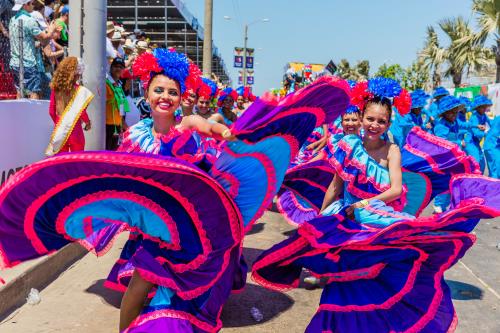
Hispanic Heritage Month, celebrated in the U.S. annually from Sept. 15 to Oct. 15, was once Hispanic Heritage Week. It started in 1968 to observe the many contributions, diverse cultures and different histories of the Latinx community in the U.S., and it was then extended into a month in 1988. President Ronald Reagan also added commemorations for the independence days of nations like Costa Rica, El Salvador, Guatemala, Honduras, Nicaragua, Mexico, Chile, Belize, and Puerto Rico—all of which place between Sept. 15 and 23.
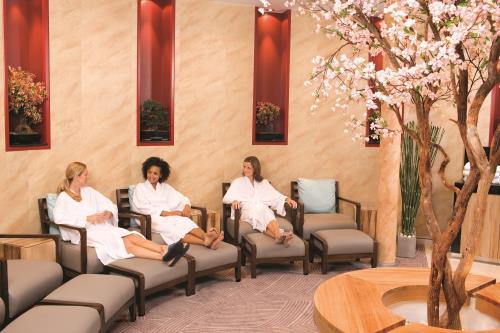
Vacation is the best time to unwind, de-stress and escape. Royal Caribbean gets it—that’s why every cruise offers the perfect combination of adventure and relaxation; and how you recharge is entirely up to you. Each ship features a Vitality Spa and Fitness Center, the popular full-service spa and gym on board, complete with a first-class lineup of services, massage therapists, fitness instructors and personal trainers. From simple beauty treatments to a comprehensive nutrition analysis, you’ll find just what you need in the hands of Royal Caribbean’s trained experts. Read on (and watch the video below) to explore all the ways you can feel pampered and renewed while sailing with us.
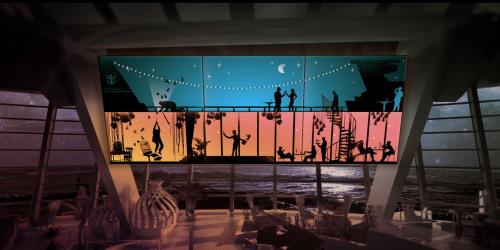
Vincent Vacations - Authorized Spa Vacation Planner
Questions? Call us at
1 (888) 883-0460
No-Obligation Spa Vacation Quote Request Form
Free Cruise Package Quote
Spa Deals
Contact us for the latest Spa deals.
For groups of 10
or more rooms, or 8 or more cabins, please use our Group Form
Click Here for our Group Department
















 CLIA Certified (Cruise Lines International Association)
CLIA Certified (Cruise Lines International Association)